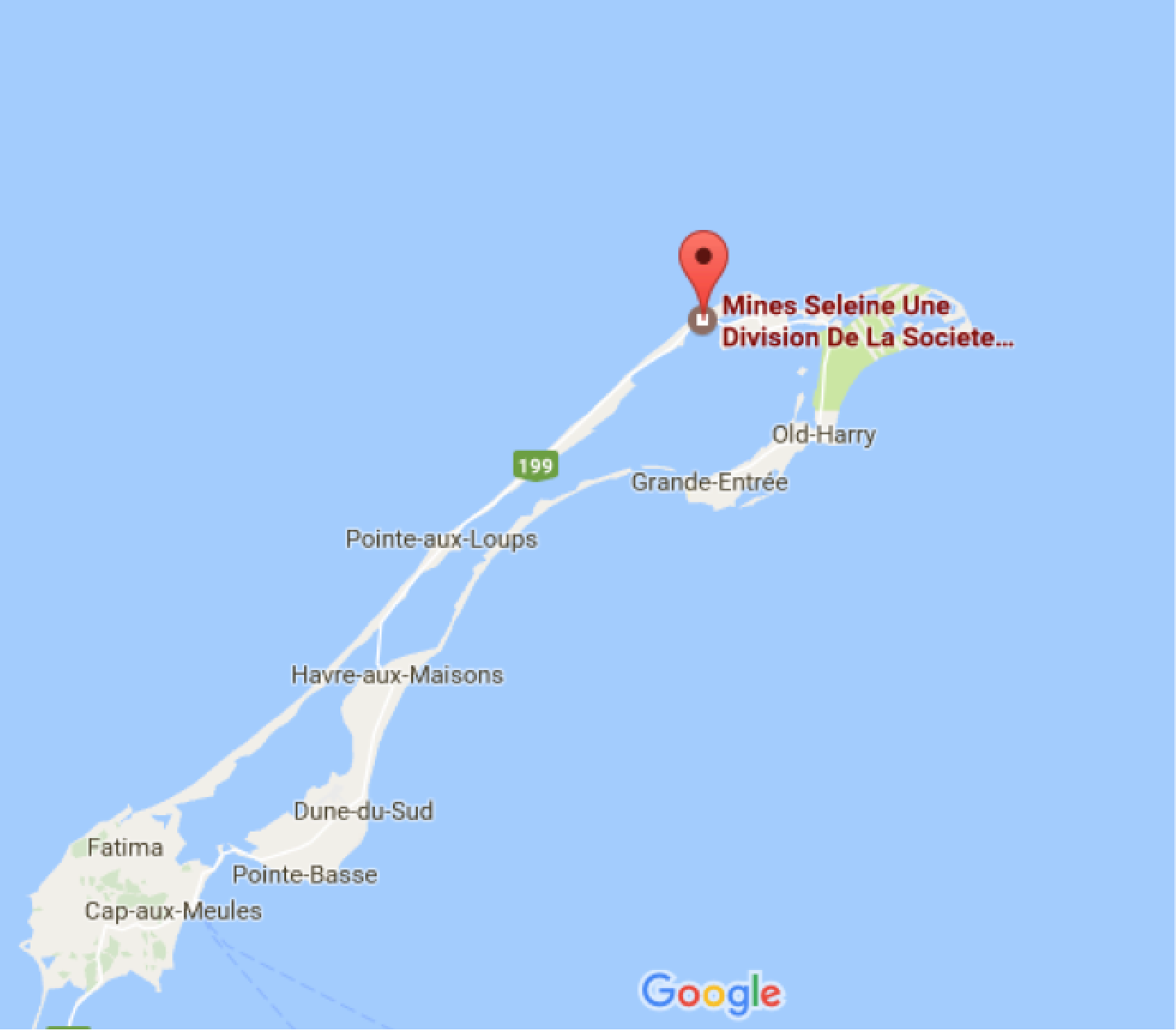Mines Seleine, a K + S Windsor Salt Ltd. property, is located on Grosse-Île in the Magdalen Islands. It is Québec’s only salt mine.

History
In 1972, the Québec mineral exploration board SOQUEM discovered the salt domes on the Magdalen Islands, including the dome on Grosse-Île. There are seven domes in all.
One of the domes, the closest to the surface, is located under Grosse-Île, and rock salt has been mined there since 1982. The salt is used for road de-icing.
How were the domes formed?
The Magdalen Islands are located at the centre of a vast undersea plateau known as the Magdalen Shallows. A surprising fact is that around 360 million years ago, the plateau was actually situated on the Equator.
There, it formed a sunlit valley that was periodically flooded with saltwater from the sea. The strong sunlight caused the water to evaporate, leaving a deposit of salt. Over several million years, hundreds of metres of salt crystals formed, and were then compressed and hardened to form rock salt.
As the continents drifted apart, the Magdalen Shallows left the Equator and moved to their current position in the Gulf of St. Lawrence. It is thanks to the buoyancy of the salt domes beneath that the Magdalen Islands emerge from the waters of the St. Lawrence.[1]
Mining to a depth of 489 metres
Although the domes are close to the surface, mining takes place underground, at a maximum depth of 489 metres.
Mines Seleine uses a room-and-pillar mining method, explained below.
- Mining takes place on several levels. The mine workers use a ramp to access the various levels of the mine.
- Each level is mined in a way that creates empty “rooms” between a series of “pillars” that hold up the roof.
- A cutting machine is used to make a clean horizontal cut at floor level. Each cut prepares the wall of the room for blasting, over a width of up to 25 metres. Drillers create horizontal and vertical drill holes to prepare for blasting.

Several galleries allow equipment to be driven through the underground network of rooms. This can be seen in a video of Premier Philippe Couillard, announcing the signing of an agreement between Mines Seleine and the Québec department of transport, sustainable mobility and transport electrification transport to provide de-icing salt to make Québec roads safer in winter. The Québec Mining Association also addresses the same topic in a humorous clip that can be viewed here (French).
The mine produces over 1,300,000 metric tonnes of salt each year.

Key facts
A cutting machine resembles a giant chain saw with a blade 4.2 metres long. Similar machines were used in coal mines in the 1960s, and were then adapted for use in salt mines.

It is currently expected that activities at the mine will be able to continue for another 30 years.
Around 150 people work at Mines Seleine, most of them inhabitants of the Magdalen Islands.
After 30 years of activity, Mines Seleine now has a second generation of Magdalen Islanders working as miners.
Key dates
1972 – Discovery of the salt domes by SOQUEM (Société québécoise d’exploration minière)
1982 – Opening of the mine after an investment of $125 million
1988 – The mine is sold to the Canadian Salt Company (Windsor Salt)
2009 – The mine is taken over by the German group K+S
Operator: Mines Seleine, K+S Windsor Salt Ltd.
Region: Magdalen Islands
Substance: Salt
Status: Active underground mine
Jobs: 150
Sources:
- Mines Seleine, K+S Sel Windsor ltée
- Attention Fragîles : La formation des îles, une histoire de sel
- Ici Radio-Canada nouvelles
- Wikipédia
[1] La formation des îles, une histoire de sel (http://www.attentionfragiles.org/en/who-we-are/15-transport-ecologique.html)